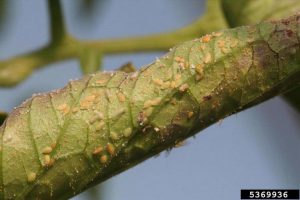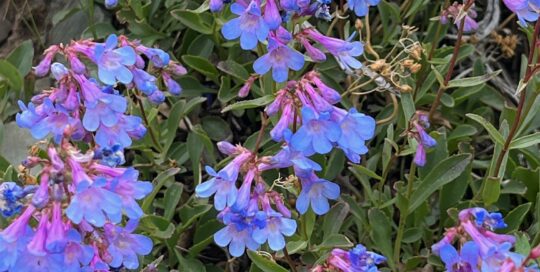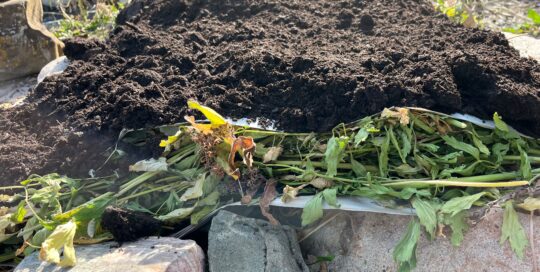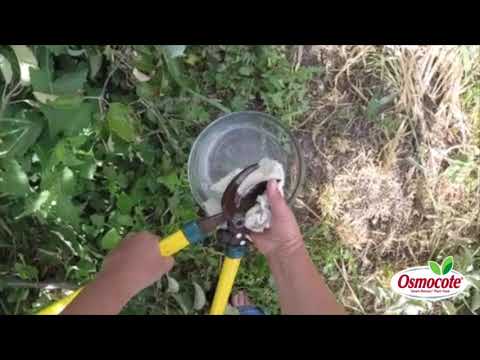Psyllid Infestation on the Tomatoes
Views: 6878

You learn something new every day. When a friend posted the symptoms of her languishing tomato plants on social media this week, it sounded like a psyllid infestation. Although, I didn’t think we had them around here.
The leaves were curling, turning kind of yellow, and the veins were purple. When I went over to take a look at them, I’m pretty sure that’s what she has.
Psyllids are tiny sap-sucking insects, often called jumping plant lice, which infect plants with toxic saliva. This is what causes the chlorosis, purple veins, and withering leaves. The good news (at least for Northern gardeners) is they don’t overwinter in this area. The bad news, for everyone, is they’re very hard to spot before they’ve caused damage. Once they have, it can severely affect the plant.
What do Psyllids Look Like?
Psyllids thrive in the southern states, such as New Mexico and Arizona. However, they can make their way to these parts on the wind currents. Their outbreaks are hard to predict. My guess is with the early, warm spring and hot summer, we had the right conditions for them to thrive. They prefer members of the nightshade family, and can be particularly troublesome on tomatoes, potatoes, and peppers.
The adults lay eggs (up to 1000!) on the underside of the leaves, but they’re so tiny that you’re hard pressed to notice a psyllid infestation. The nymphs aren’t much bigger. They start out a yellow/orange color, but fade to green, making them even more difficult to see.
The adults have clear wings, and are about the size of an aphid. Once again, they’re really hard to spot, so one method to detect their presence is to set out the yellow sticky traps if you expect an infestation. You also can look for what’s called “psyllid sugar,” which is a white excretion found on the leaves.
Unfortunately many gardeners, particularly those of us who don’t expect them to show up on our plants, won’t know there’s something wrong until the plants are infected and exhibit signs of distress. If you find you have them, you can treat the plants with permethrin to eliminate the pests, and hopefully allow the plant to bounce back to some degree.
How to Prevent Psyllid Infestation
For those of us in the north, we don’t have to worry about the psyllids to reappear in the spring. They simply can’t overwinter in this cold climate. (Okay, so maybe there is something good about not being able to feel my fingers for seven months out of the year.)
For gardeners in the warm climates where they do remain, according to the University of California, it’s important to eliminate perennial host crops, such as mallows and tree mallows, to prevent them from taking up permanent residence, and to toss any annual crops (like the tomatoes) that are infected with psyllids.
They also recommend to plant the crops as early as you can in the spring. The thought being, if the plants are large enough, they can withstand an attack. And you’ll want to be vigilant from the get-go in the early season, setting out the yellow sticky traps and being ready to treat your plants, if necessary.
I’m always sorry when a gardening friend is having issues with her plants. It’s frustrating to start the season with abundant hope and promise, only to have some oddball insect fly in and spoil the fun. Hopefully, this is going to be a one-time event for her, although now I know to keep an eye out for these traveling pests, particularly if we have warm springs, and to eliminate them before they cause too much damage.
The photo is courtesy of Whitney Cranshaw, Colorado State University, through the site bugwood.org.
Meet Amy Grisak
Amy is a freelance author and photographer in Great Falls, MT who specializes in gardening, foods, and sustainable agriculture. She provides information on every kind…
Amy's Recent Posts

Watch for Fungal Diseases on Penstemon








